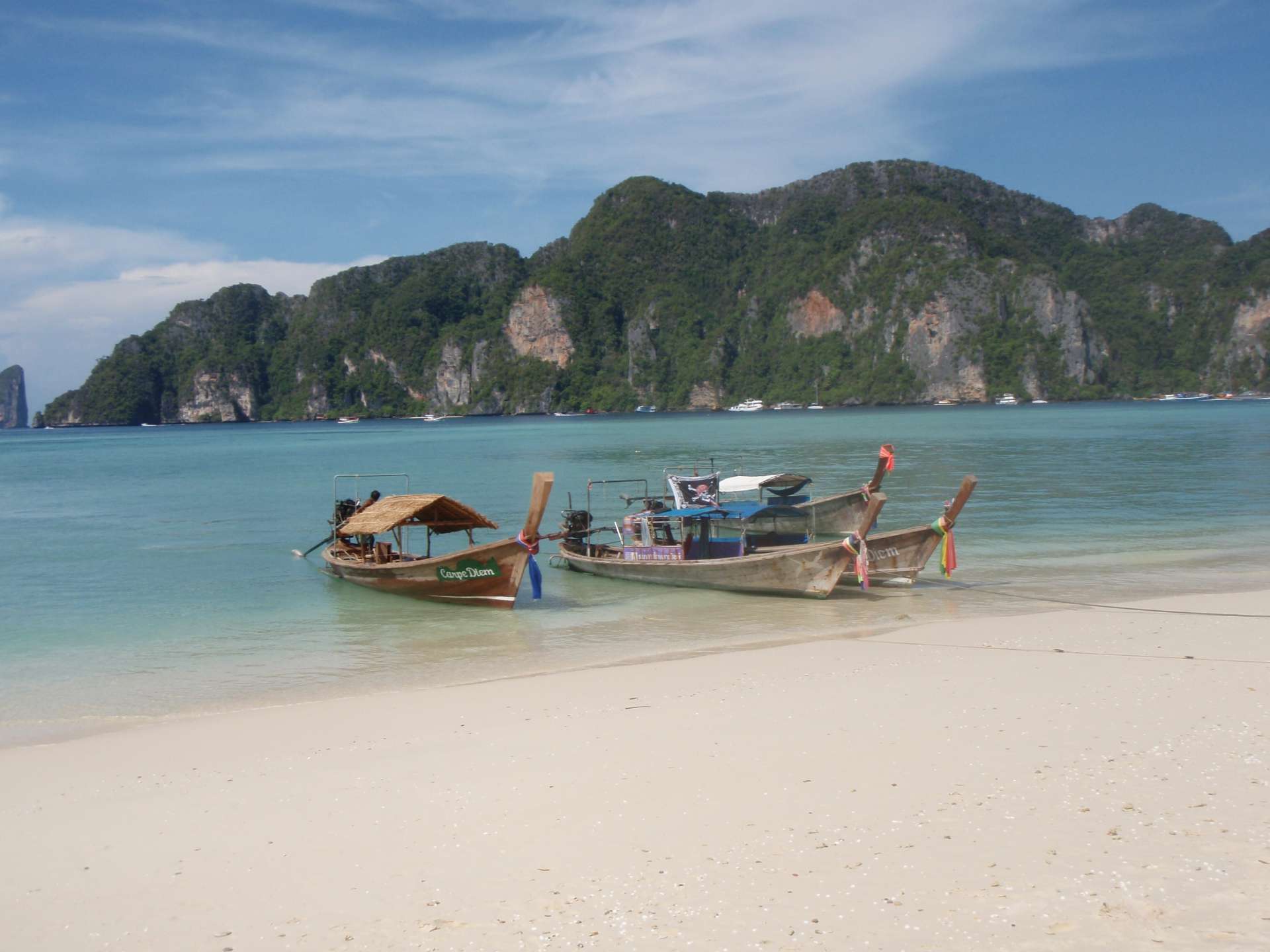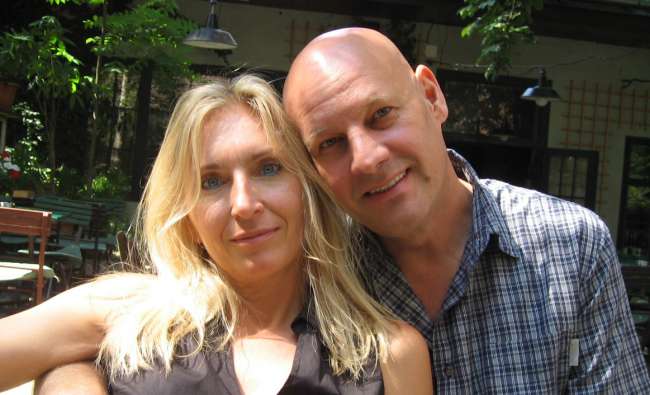Eintauchen in den heiligsten Ort Indiens: Varanasi
Publicado: 09.06.2017
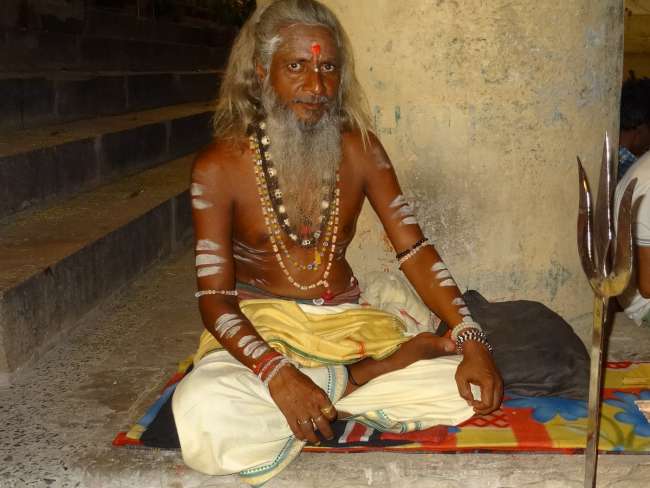
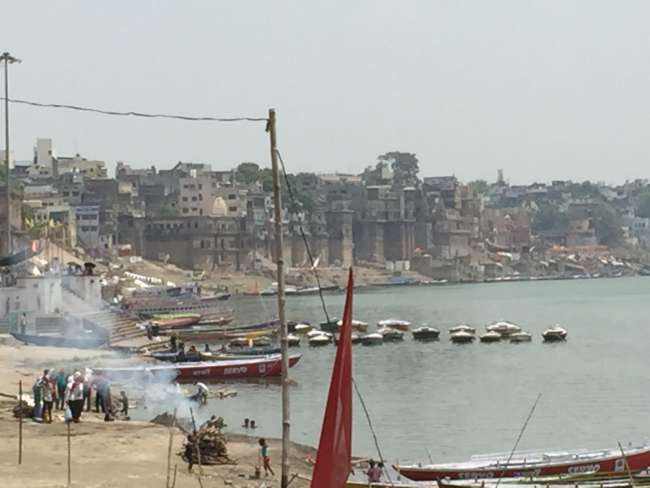
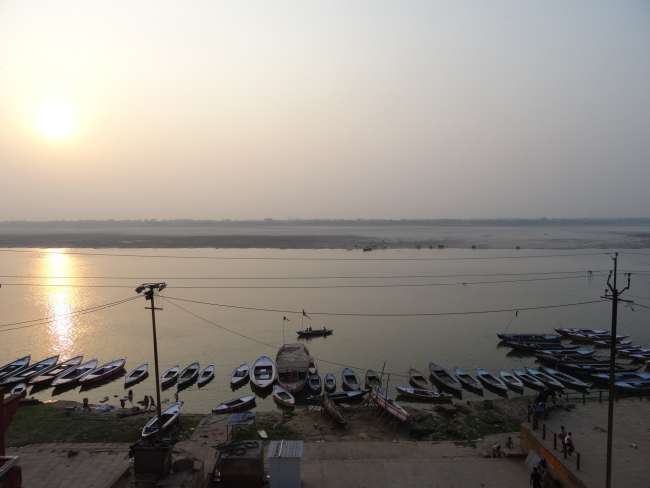
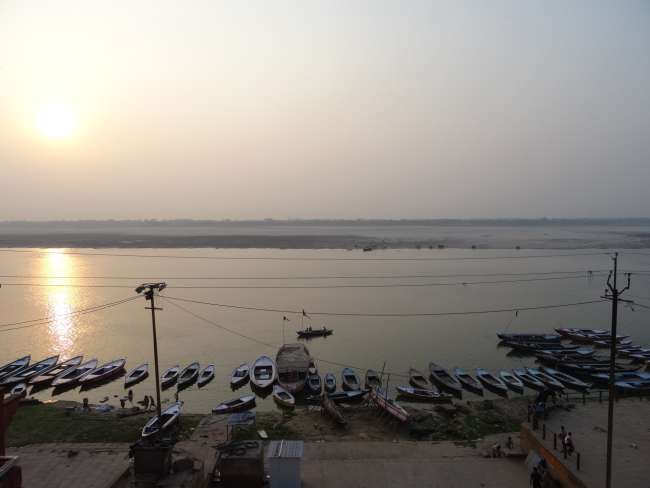
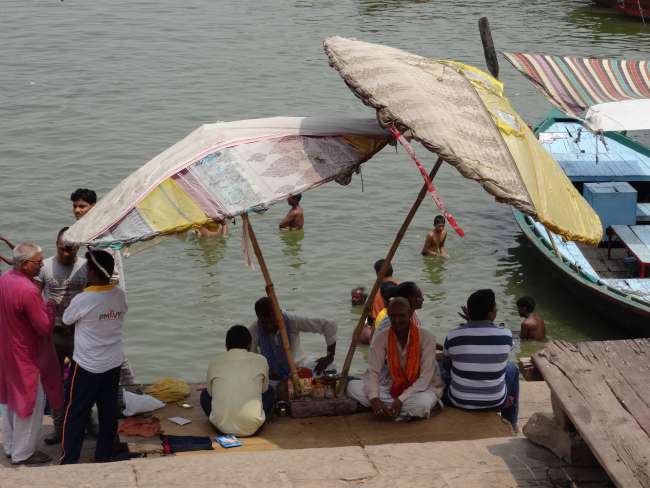
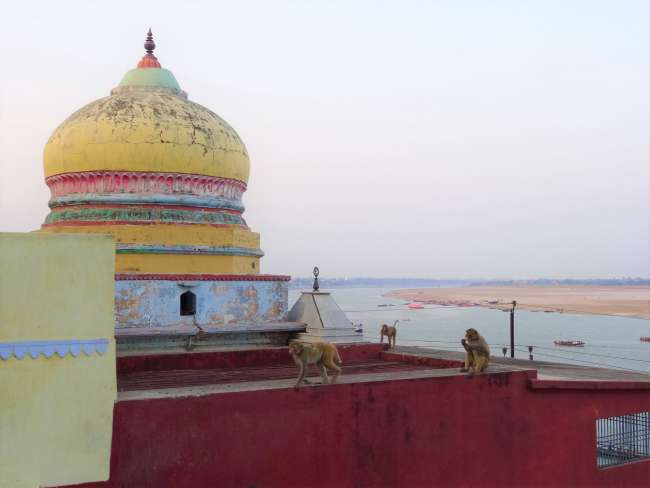
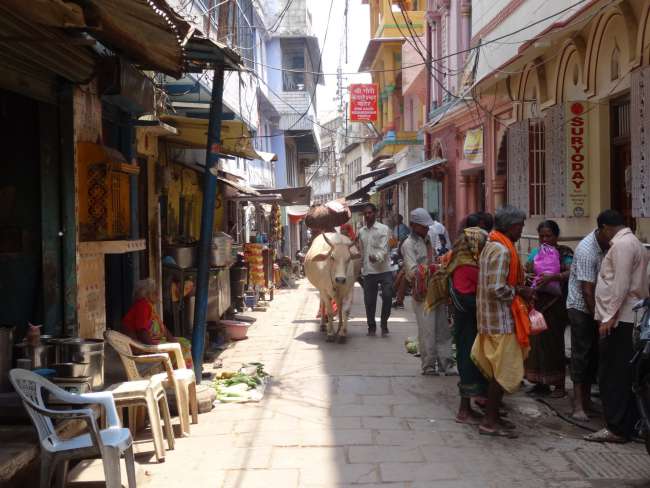
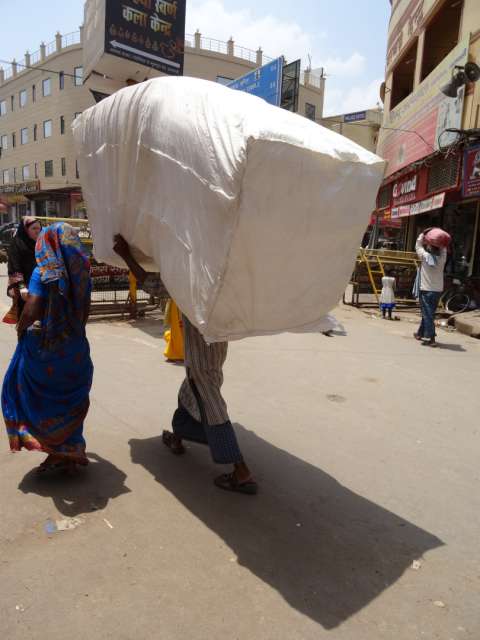
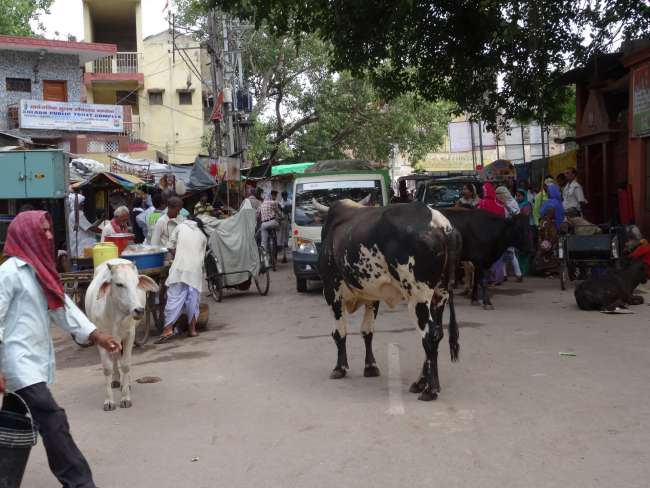
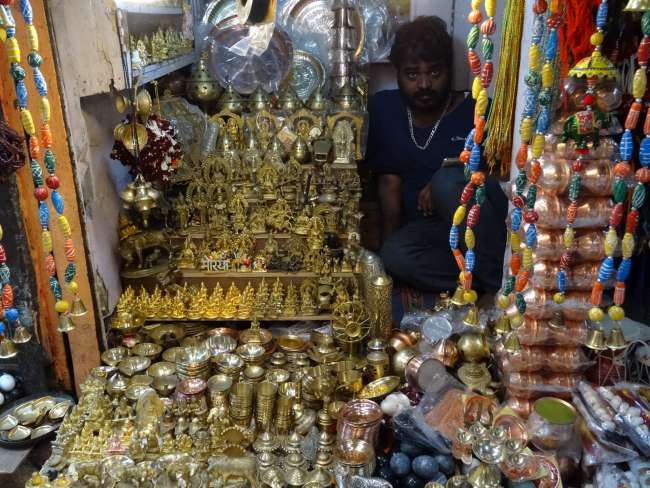
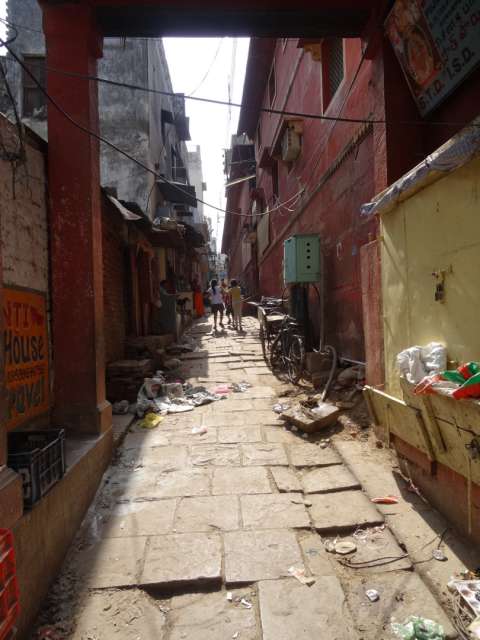
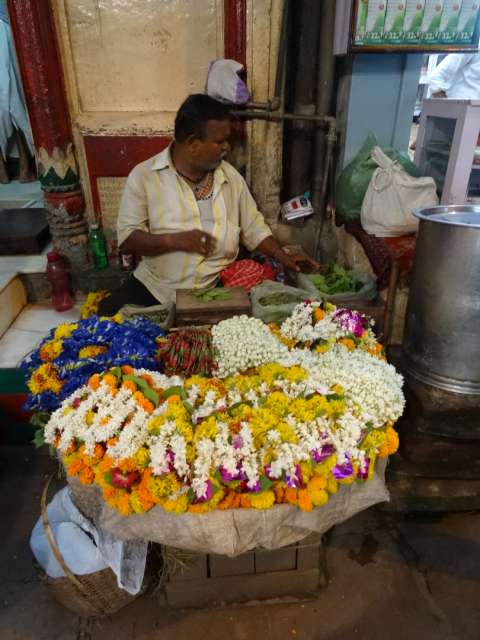
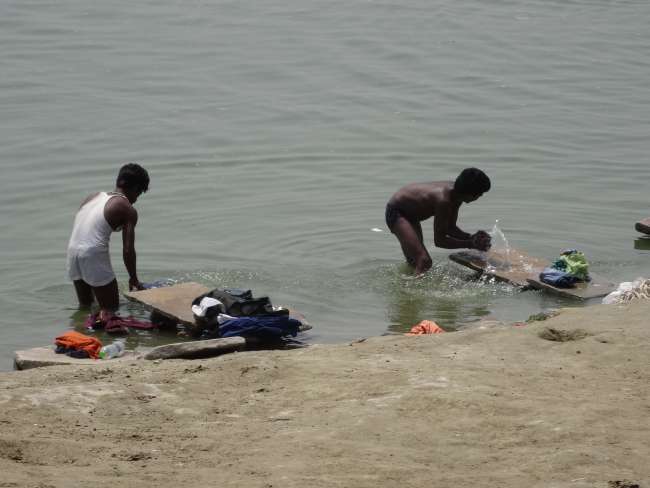
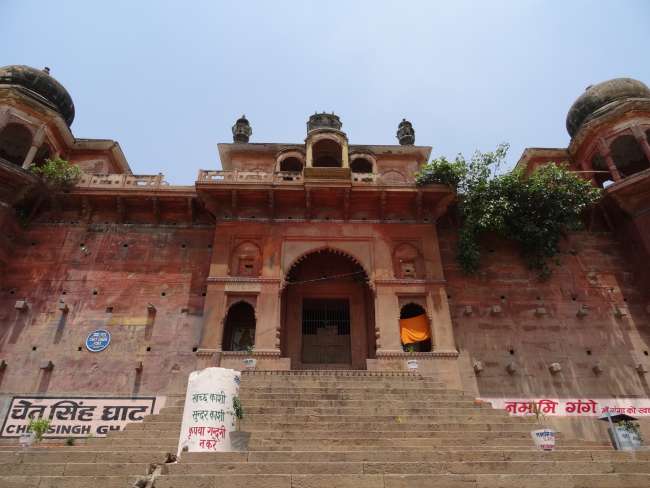
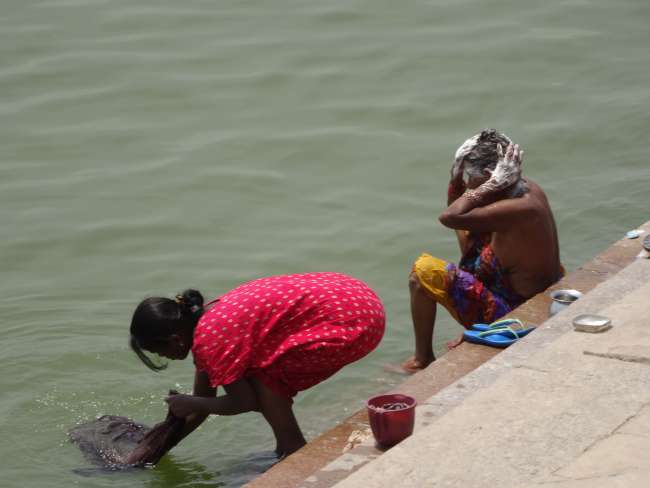
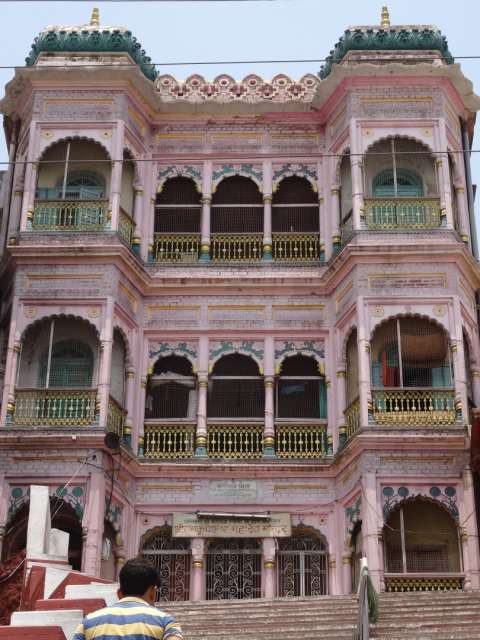
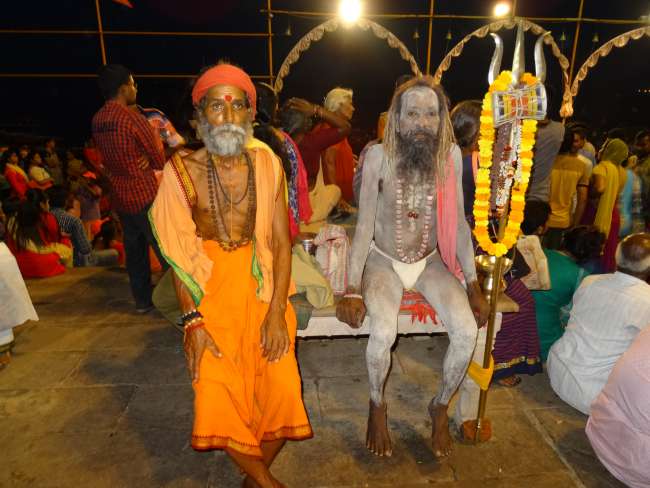
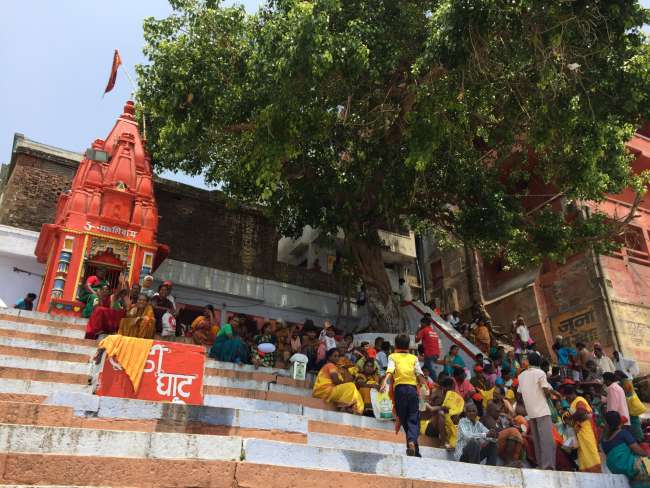
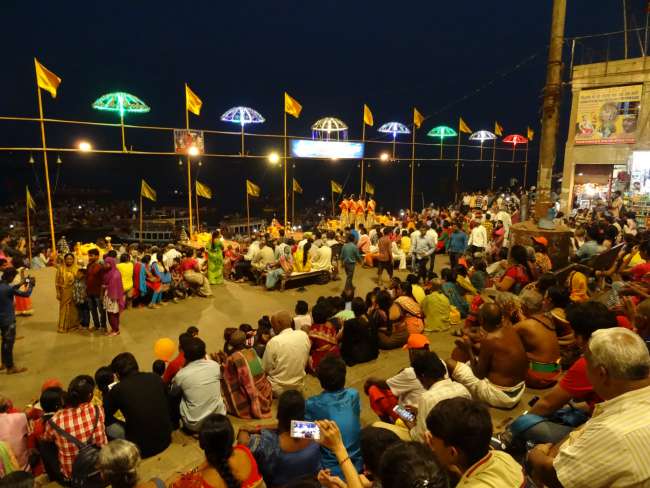
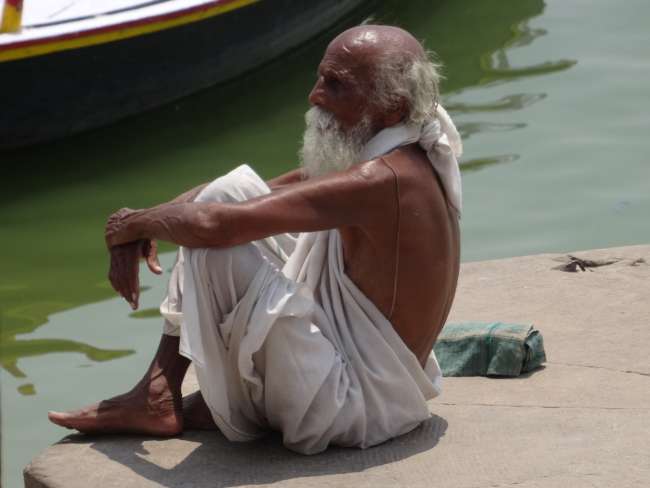
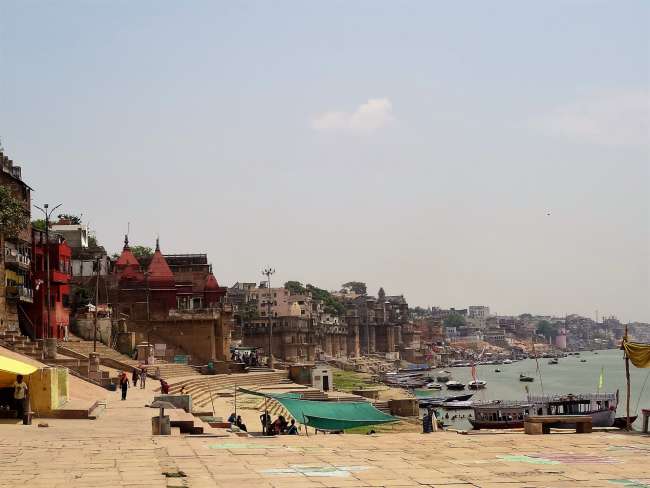
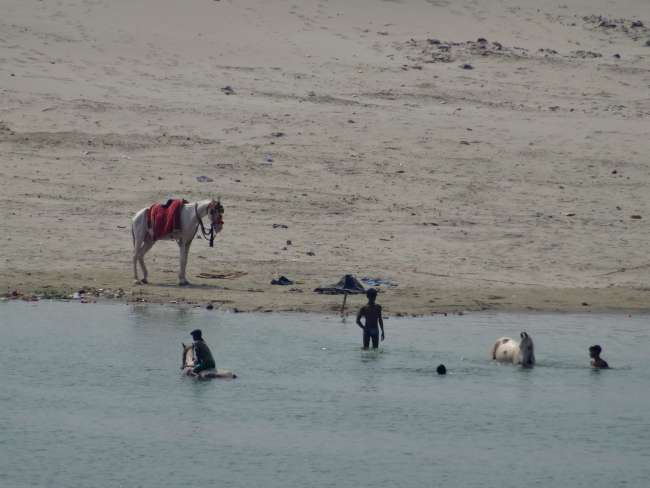
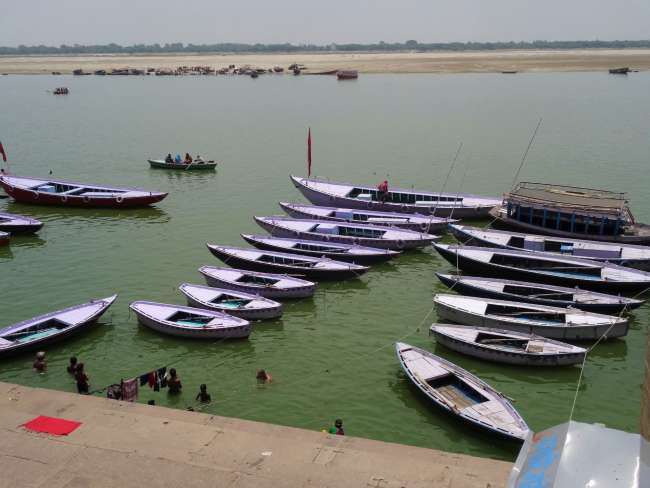
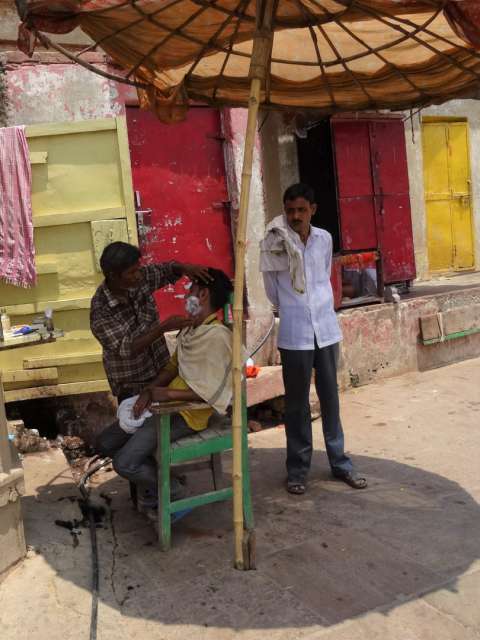
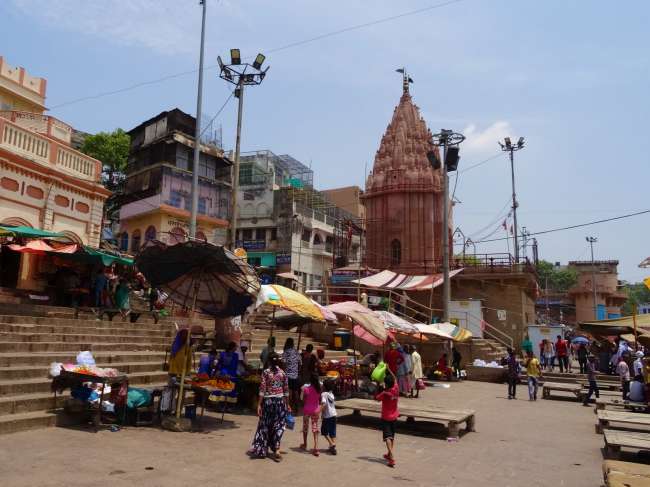
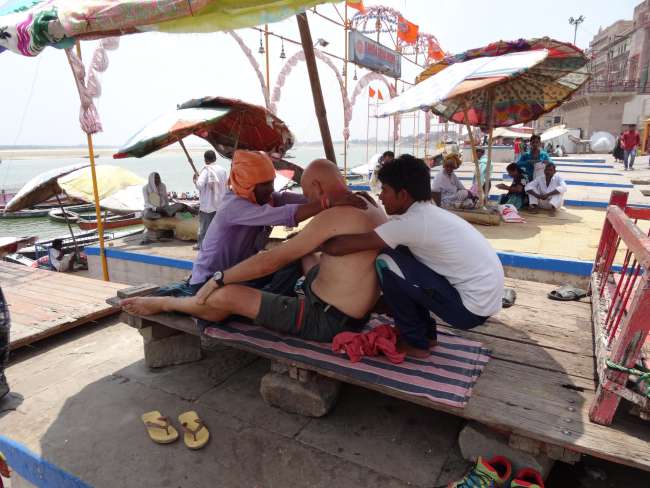
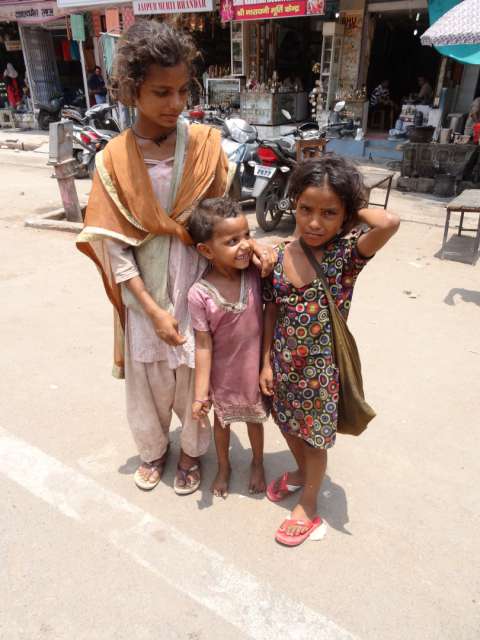
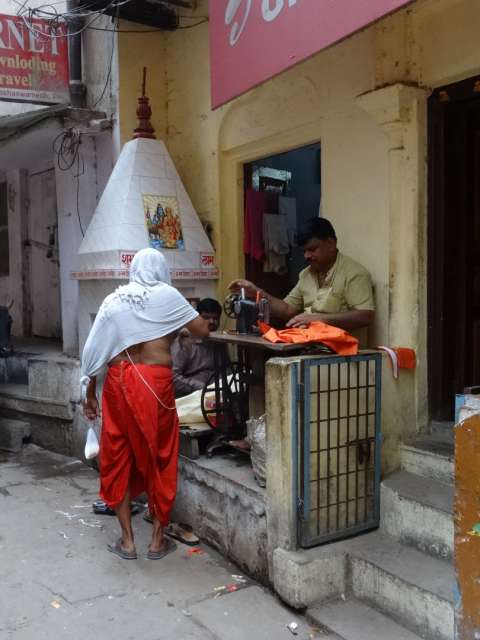
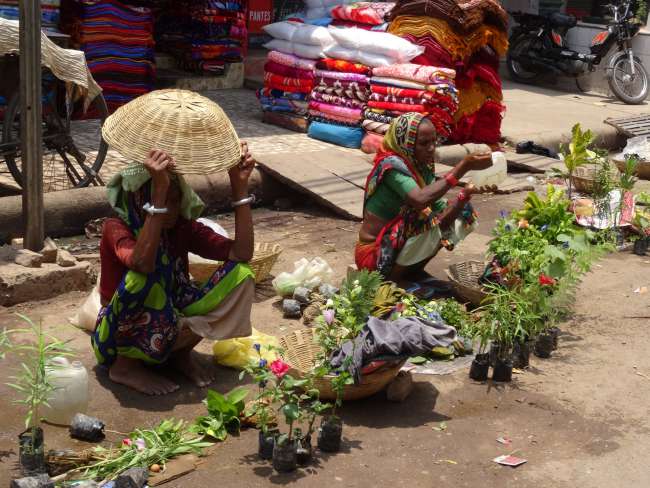
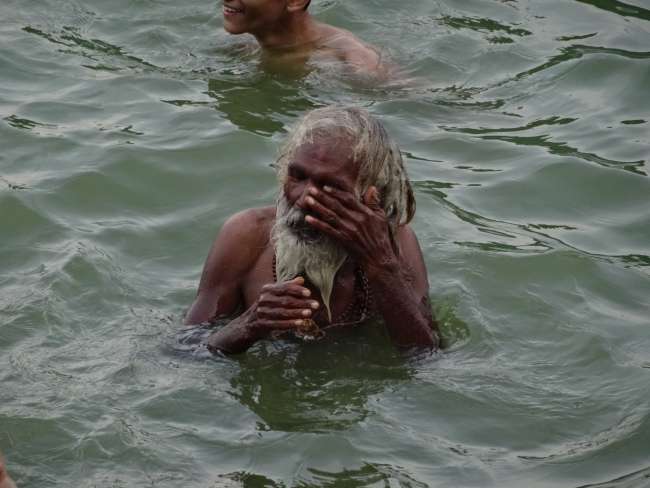
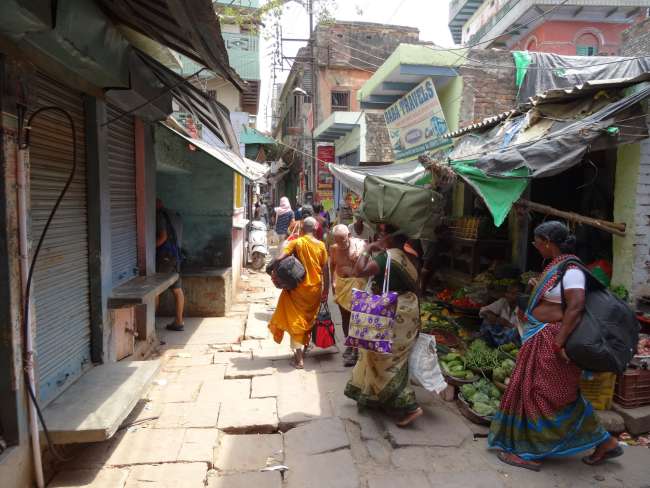
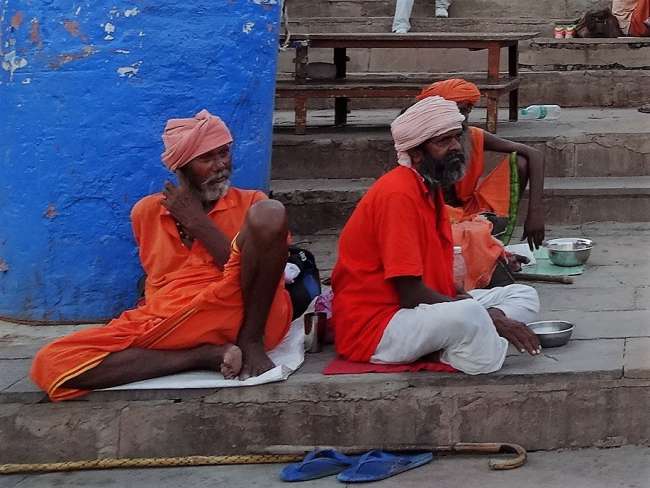
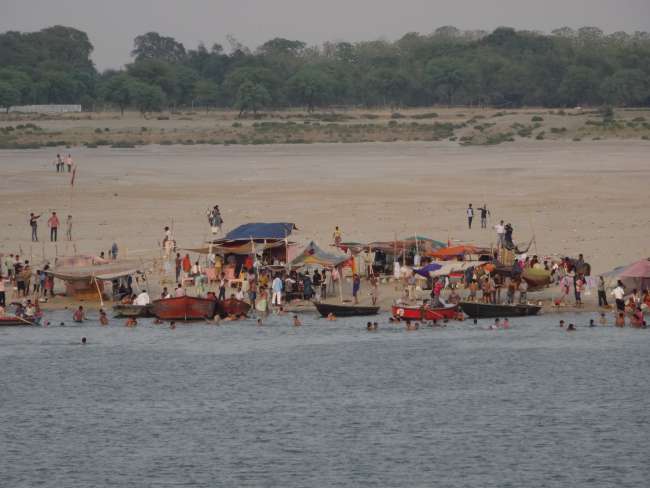
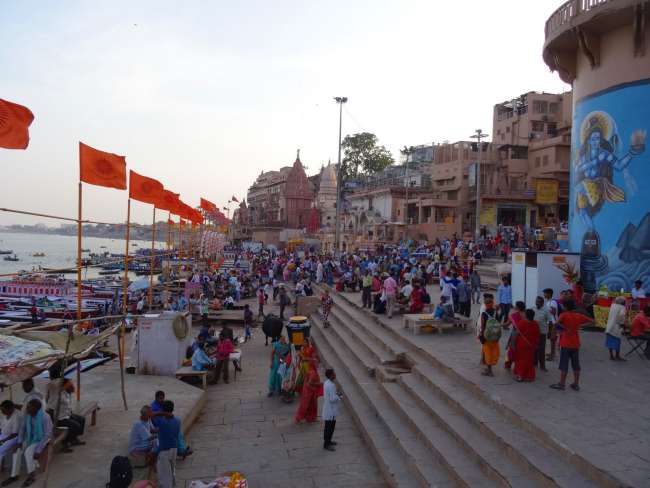
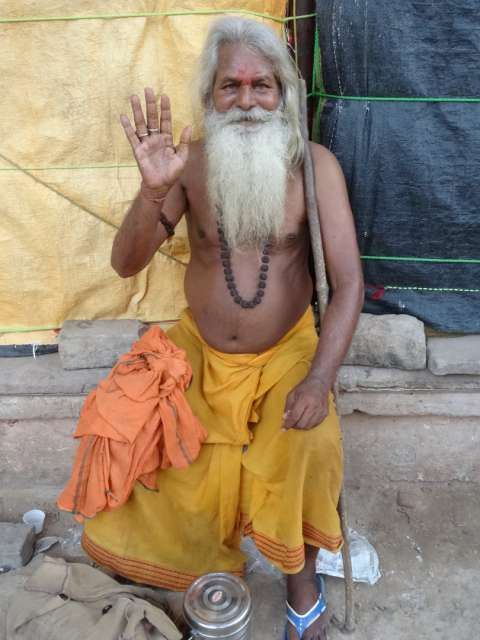
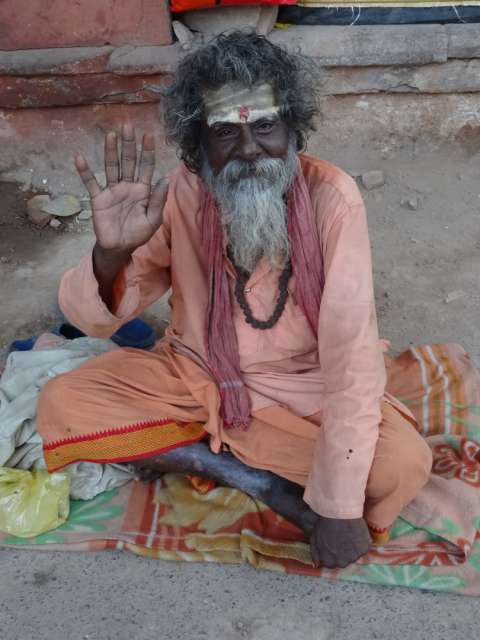
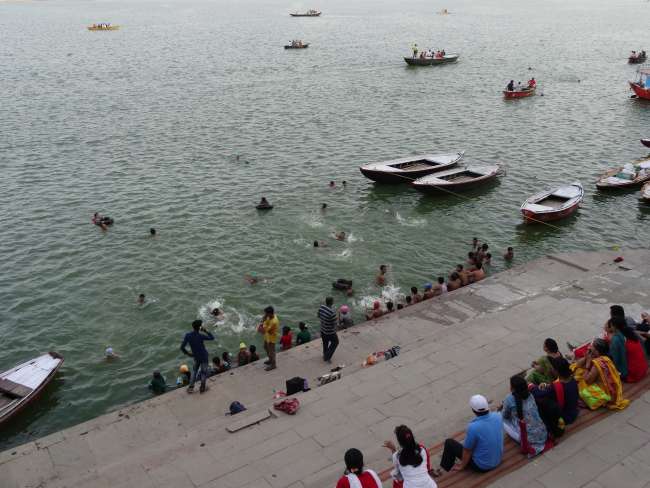
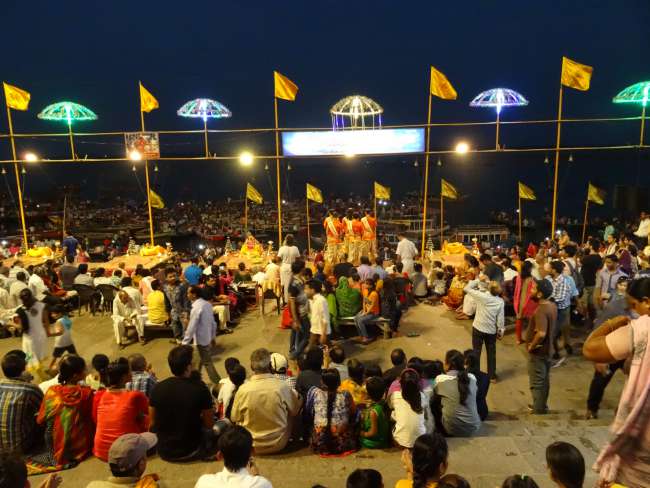
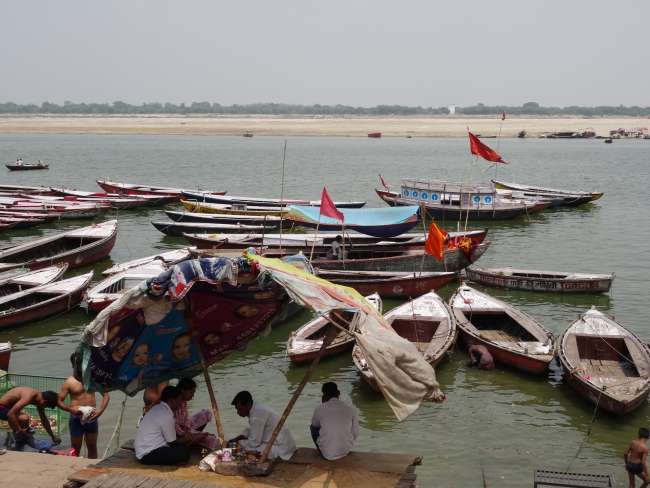
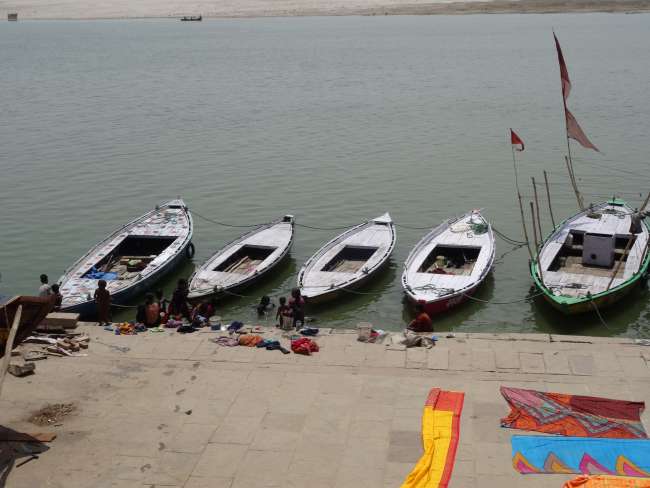
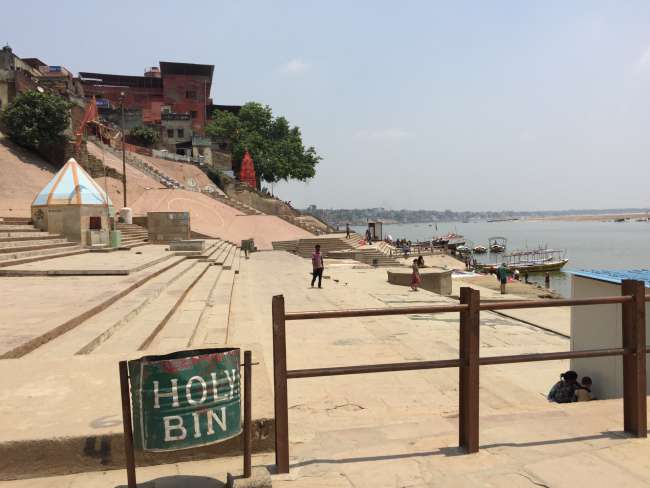
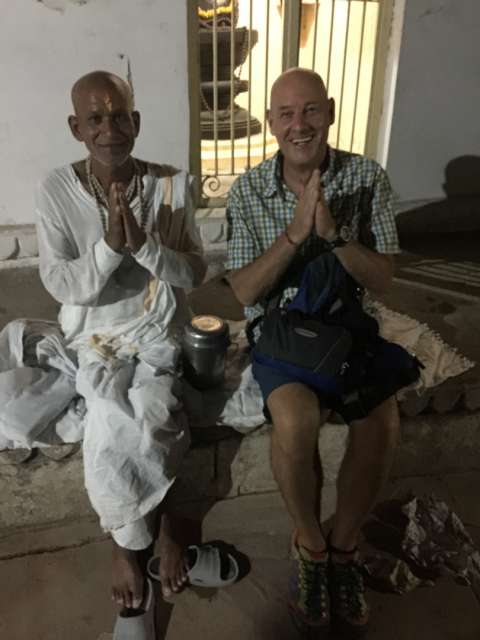
Suscríbete al boletín
Varanasi


On a night train, after an eight-hour journey from Agra, we arrived in Murghalsarai early in the morning. From there, we continued to Varanasi by Tuk-Tuk.
The first impression was a bit confusing. Very narrow, sometimes extremely littered and foul-smelling streets, where cows and mopeds with loud honking maneuver through everywhere. On the street, you come across countless poor people and beggars. The heat is currently extremely intense at 45 degrees Celsius daily, which exacerbates everything. We usually like to walk everywhere, but here every longer walk becomes an effort.

Shops and various services are also gladly moved directly to the street here.
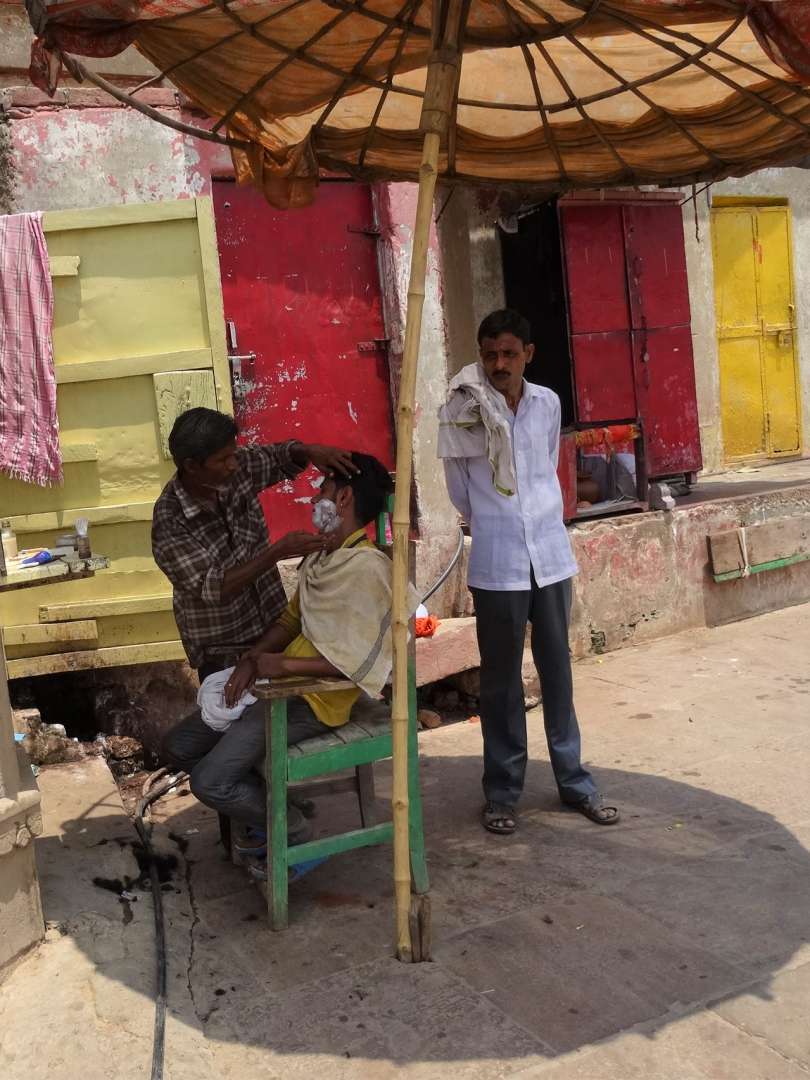

The markets are crowded, with loud calls to buy various goods next to fruits and vegetables, souvenirs, Hindu relics, offerings, and silk products.

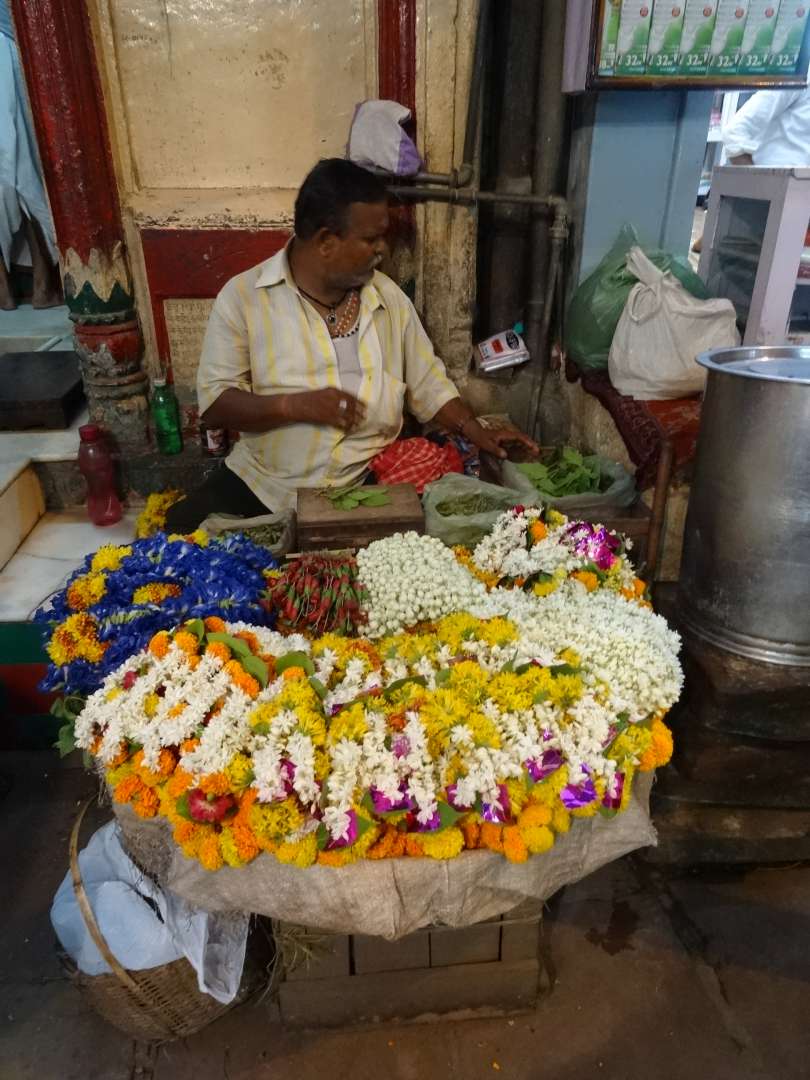
A little further away, I saw a completely emaciated old man collapsing in a wheelchair, looking completely dehydrated. People stood around him, watching him slowly collapse. After we got him water, he drank a liter of it with some help and recovered relatively quickly. Peter later said that maybe I had messed up this man's plan to die here (for now). I didn't see it that way, it's also hard for me to watch, even though the situation can be resolved relatively quickly with a simple measure.

Tens of thousands of devout Hindus from all over India come to this holy city on the Ganges every day to participate in various important religious rituals. According to Hindu belief, one can cleanse oneself spiritually by taking a bath in the Ganges. But people also come here from everywhere to die, as this is supposed to break the eternal cycle of reincarnation.
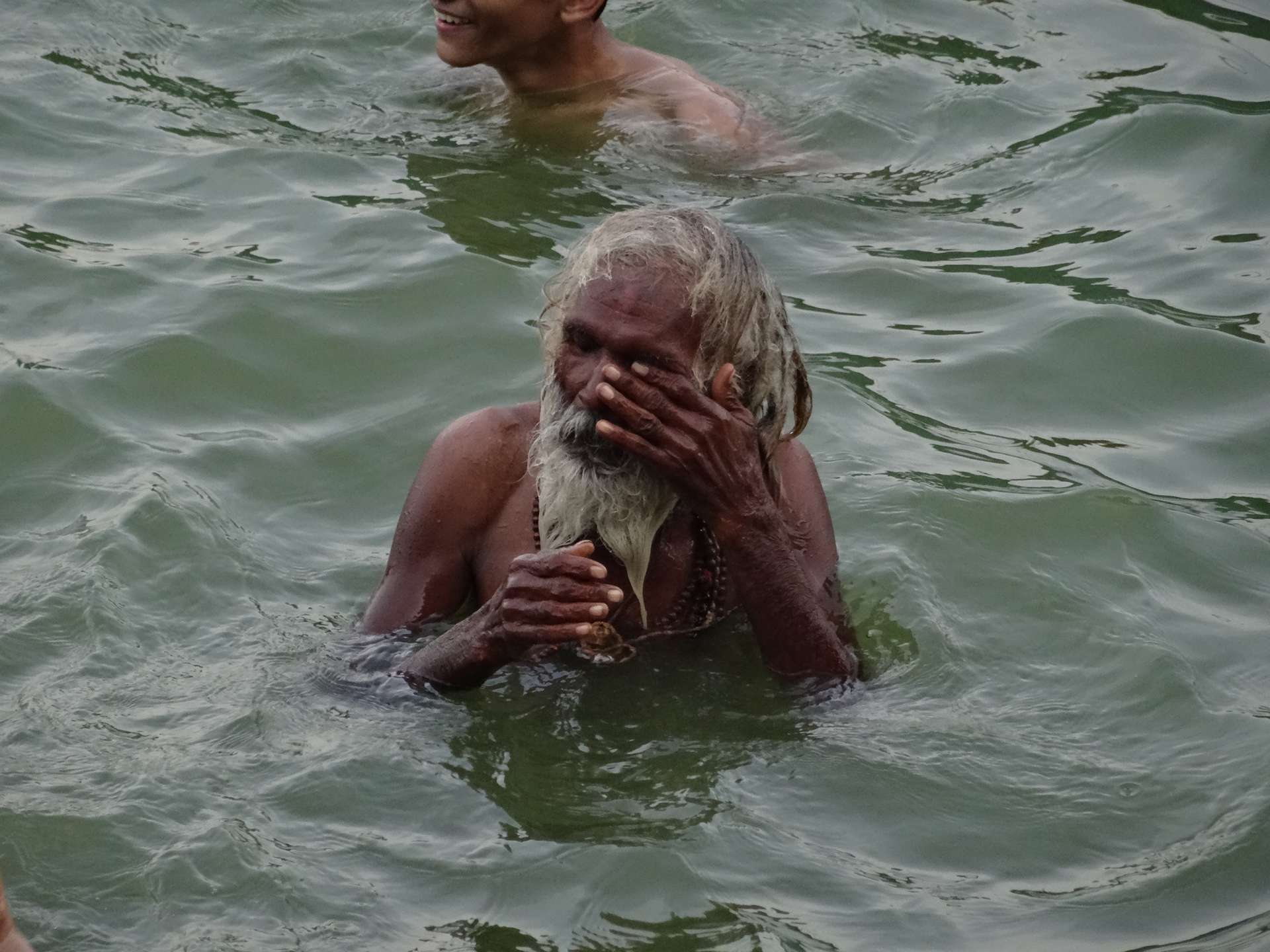
We visited the place where bodies are cremated for about 3 hours around the clock, after appropriate ceremonies, and then the ashes or, if the relatives cannot afford enough wood, the physical remains are scattered in the Ganges.
A man who is involved in these processes as an untouchable gave us very interesting insights. He explained to us that only men are allowed to participate in these cremation ceremonies, as women are too emotional and their emotional outbursts would disrupt the hopeful and positively connotated act from a Hindu perspective.
Sati (widow burning) only happens occasionally in rural areas - the last occurrence was last year - he himself witnessed one about 20 years ago.
Furthermore, the man informed us that not everyone can be cremated. Excluded are Sadhus (holy men), children, pregnant women, lepers, and those poisoned, such as people bitten by a cobra, as well as animals, which are directly given to the holy river to break the cycle.
Although officially prohibited by the authorities for a long time, around 200 deceased are 'buried' in this way every day.
It is unimaginable for us that Sadhus themselves drink the water of the Ganges, but I wouldn't even want to dip a toe in it.
Various festive ceremonies also take place at other places on the banks of the Ganges, with huge crowds of people singing and praying.

A walk along the Ganges in the morning is very impressive. The heat is much more bearable at this time and the atmosphere is calmer and more spiritual. Occasionally, you see meditating Sadhus.

As we walk by, a local who is having a small meal under an umbrella invites us to have breakfast. We decline and continue walking.

Some people are bathing in the Ganges, children are splashing and fooling around, while nearby laundry is being washed and then spread out to dry on the rocks.

A little further on, a few fishermen are sitting there, trying their luck with just a simple fishing gear. One of them gets a bite and pulls a small catfish ashore.
It's incredible that in the Ganges, where billions of liters of wastewater with highly toxic substances are discharged every day, any living being can exist at all, amidst countless pollutants and pathogens. Various measures to limit massive pollution through appropriate sewage treatment plants and thus improve water quality have unfortunately largely failed so far. Millions of Hindus still bury their dead or the remains left after cremation of these in the holy river, and despite being legally banned, they consider this important tradition as their customary right. Furthermore, responsible factories are alleged to continue to discharge highly toxic waste products such as mercury without any hindrance due to widespread corruption.
Along the banks of the Ganges, which have a total length of about 2500km, one-twelfth (!) of the world's population (!) lives in more than 100 cities and thousands of villages. Approximately 2 million children (according to different literary sources) allegedly die each year directly as a result of Ganges pollution. One out of every six children here will not reach the age of 15. An incredibly sad reality...
We have now arrived at another Ghat, which is already very crowded at this advanced time of day. Here, in addition to refreshments, beautifully fragrant flower wreaths, candles, and small plastic cans are offered. Many Hindus also like to take some holy water home with them.

With the crowds, there are now also a lot of pushy touts at work again. This time, Peter is skillfully persuaded to have a full-body massage on the spot, and is immediately worked on by two young men on the bank, allegedly teachers and students of Thai massage techniques.
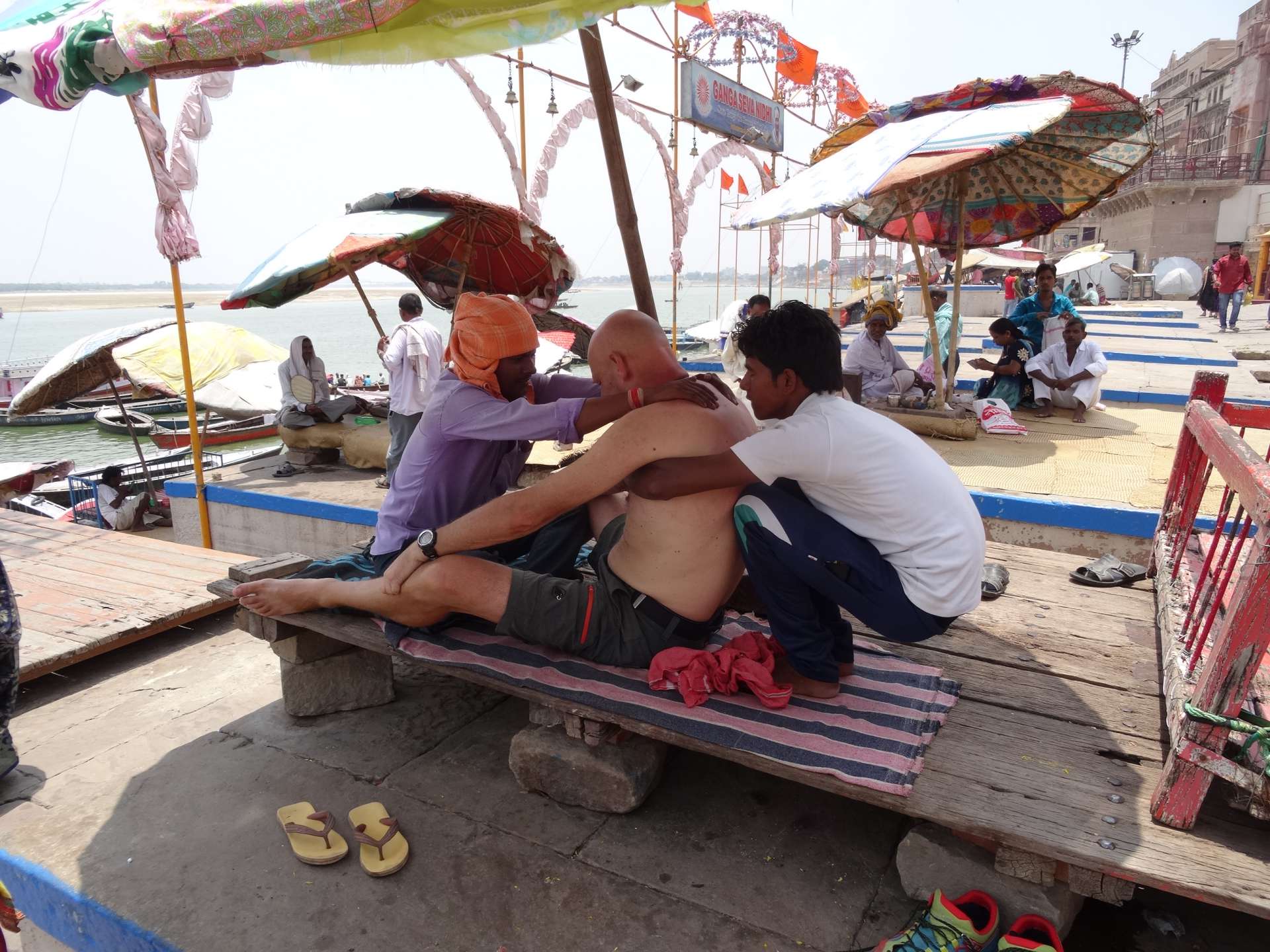
In the meantime, I waited in the shade, but time passed very quickly for me, as many - this time especially families - wanted to take selfies;) with me.
We then continue walking towards the market. Many begging people are sitting side by side at the edge of the stairs, old women, women with babies or young children, and at the other end, a row of severely mutilated lepers. At the moment, there are hardly any foreigners visiting due to the high heat during the off-season, so the few are courted accordingly. We are fixed from all sides with pleading eyes or pulled by children to earn a few rupees. This is quite stressful for me, because nobody here looks like they don't desperately need support.
Now we pass a mother sitting on the ground in the middle of the market, loudly scolding and hitting her six-year-old daughter with a clenched fist. I intervene and urge her to stop immediately. In my helplessness, I mention that she is deteriorating her karma by doing so. She looks at me astonished and pauses for a moment. The girl cries very softly and looks at me sadly with big, dark eyes. I continue walking, turn around once again, and see her being hit again....
A little later, the girl and her two sisters suddenly follow us, indicating that they are hungry. We bought fruits for them at the market at their request. However, it leaves a bitter aftertaste because they followed us as strangers...
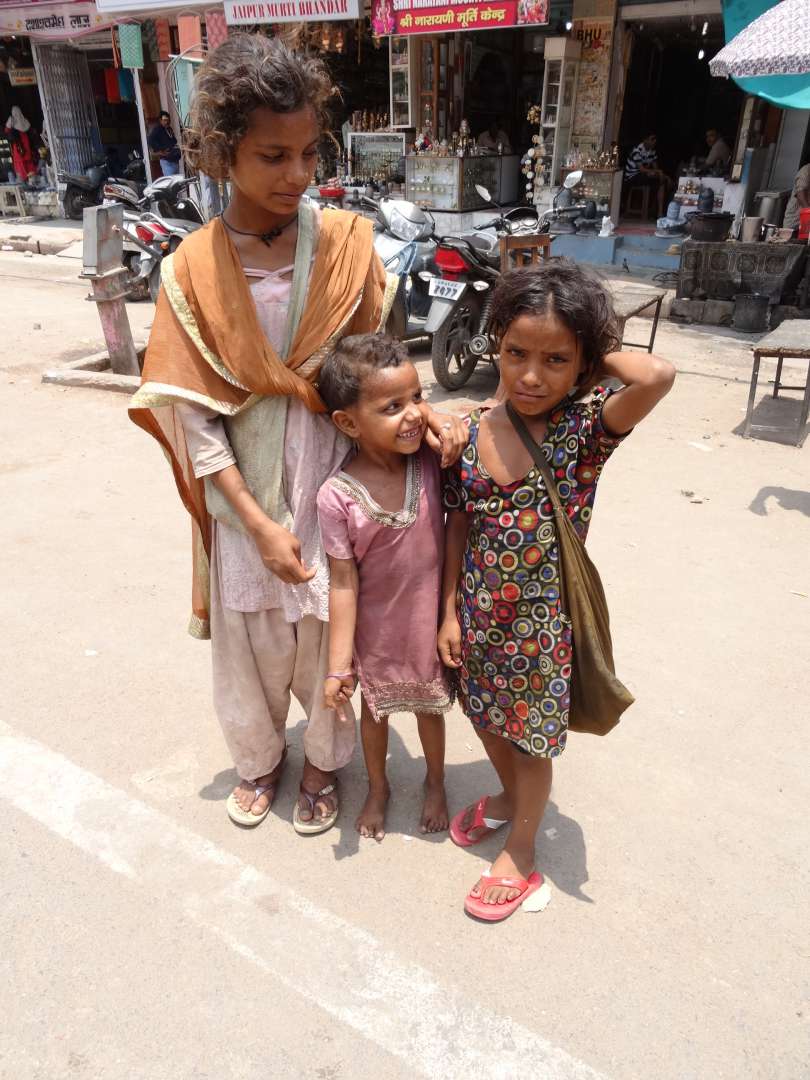
The powerlessness affects me particularly here. The impressions here are so diverse and intense. The essence of what we have experienced in India is a colorful mixture of emotions, comparable to the countless Indian spice blends. Fascinating, colorful, diverse, complex, beautiful, but sometimes disturbing and shocking, is what I have experienced here in the last few weeks.
It occurs to me that so far I have completely forgotten to mention the delicious Indian cuisine. Even for vegetarians, the range of North and South Indian cuisine is a special enjoyment of variety.
We have discovered some very good restaurants here and tried different dishes. Peter had to learn from experience that not everything was easily digestible for him. I seem to be somewhat 'more robust' in this regard, and I really enjoyed it..
Today we will take the night train further to Gorakhpur, and then continue by bus to Sonauli, where we will (hopefully;) cross the border to Nepal.

Suscríbete al boletín
Respuesta (2)
Silvia
Sehr interessant, Marion!
Endlich komme ich dazu, deine Beiträge zu lesen!
Liebe Grüße auch an PeterErich
Das klingt alles so deprimierend. Das Elend und die Not in diesem Land.
Bewundere euren Mut das ihr es wagt diesen Teil des landes zu erkunden, obwohl ihr das gesundheitliche Risiko kennt.
Habt ihr wirklich eine Leichenverbrennung live erlebt.
Hast mit der Magenverstimmung sicherlich noch Glück gehabt, hätte auch viel schlimmer sein können. Passt nur gut auf eure Gesundheit und euer Leben auf.
Erich
Informes de viaje India
